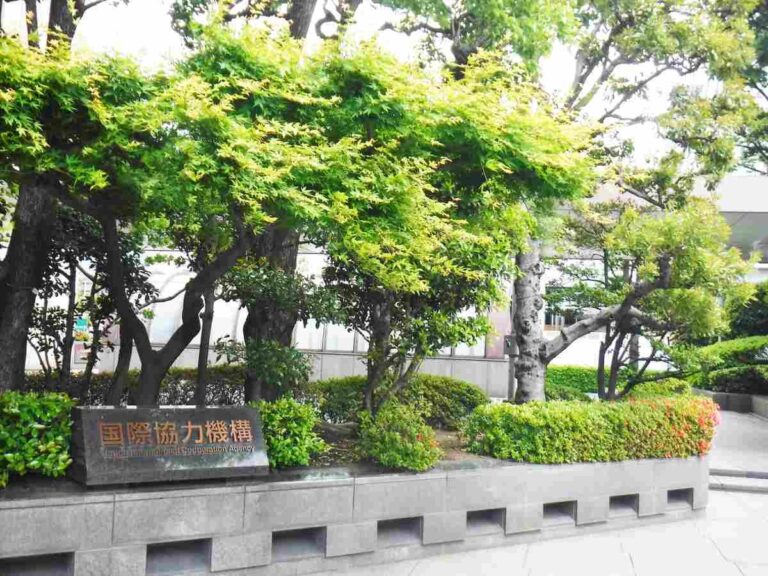Over a five-year span, a total of 126 individuals lost their lives while participating in Japan’s assistance projects across developing countries, highlighting the often overlooked risks associated with international development efforts. According to recent reports from the Asia News Network, these fatalities underscore significant challenges in ensuring the safety and well-being of personnel engaged in such missions. The revelation has prompted renewed calls for enhanced safety measures and accountability within Japan’s overseas aid programs.
Casualties in Japan’s Assistance Projects Raise Concerns Over Safety Standards
Over the past five years, Japan’s international assistance projects in developing nations have witnessed a troubling number of fatalities, with 126 recorded deaths linked directly to these endeavors. These incidents, spanning construction sites, transportation logistics, and on-the-ground humanitarian efforts, have sparked urgent debates among experts and stakeholders about the adequacy of current safety protocols. Multiple countries where these projects operate have raised concerns, urging Japanese agencies to revisit and strengthen their risk management frameworks to prevent further loss of life.
The nature of the casualties ranges from accidents involving heavy machinery to incidents caused by insufficient safety training for local workers. Key factors identified include:
- Inadequate safety equipment at remote project sites
- Poor communication between Japanese supervisors and regional teams
- Lack of standardized emergency response plans
- Environmental hazards not sufficiently accounted for in planning stages
| Cause of Incident | Number of Fatalities | Percentage |
|---|---|---|
| Construction Site Accidents | 54 | 43% |
| Transport & Logistics | 38 | 30% |
| Health-related Issues | 21 | 17% |
| Other Causes | 13 | 10% |
Analyzing Root Causes and Accountability in Overseas Development Initiatives
Multiple factors have contributed to the tragic loss of 126 lives during Japan’s overseas development initiatives over a five-year span. A detailed investigation reveals that insufficient risk assessments, inadequate safety protocols, and communication breakdowns between local contractors and Japanese agencies significantly amplified vulnerabilities. In many cases, natural disasters compounded underlying issues in project implementation, exposing critical gaps in disaster preparedness and response mechanisms. Furthermore, the complex political and social landscapes within host countries often complicated efforts to maintain strict oversight, leading to inconsistent enforcement of safety standards.
Accountability remains a contentious issue as responsibility is dispersed among various stakeholders. Below is a brief outline of key parties involved and their roles:
- Japanese Government Agencies: Oversight, funding, and strategic planning
- Local Contractors: On-the-ground execution, compliance with safety norms
- Host Governments: Regulatory enforcement and facilitation
- Third-party Auditors: Independent risk evaluations and audits
| Cause | Impact | Responsibility |
|---|---|---|
| Incomplete Risk Assessment | Project Delays, Fatalities | Japanese Agencies & Local Contractors |
| Poor Safety Measures | Workplace Accidents | Local Contractors |
| Inadequate Emergency Response | Higher Fatalities, Delayed Aid | Host Governments & Agencies |
Strengthening Safety Protocols and Enhancing Training for Future Japan-led Projects
Robust safety measures are now at the forefront of Japan’s strategy to mitigate risks in its international development initiatives. Recent evaluations have highlighted critical gaps in risk assessment and emergency response protocols that contributed to the fatalities during past projects. To address these issues, Japan’s agencies are implementing comprehensive safety audits and integrating cutting-edge technology, such as real-time hazard monitoring systems, to safeguard workers and local communities alike.
Equally vital is the enhancement of training programs, aimed at cultivating a workforce proficient in both technical skills and crisis management. The new curriculum emphasizes:
- Cross-cultural communication and local partnership building
- Advanced safety drills tailored to varied environments
- Adaptive problem-solving during unforeseen circumstances
Such measures promise not only to elevate operational standards but also to reinforce Japan’s commitment to responsible and sustainable development abroad.
The Way Forward
The deaths of 126 individuals over a five-year span during Japan’s assistance projects in developing countries underscore the inherent risks involved in international aid efforts. As Japan continues its commitment to supporting development across Asia and beyond, these incidents highlight the critical need for enhanced safety measures and accountability in such operations. Moving forward, stakeholders must prioritize the wellbeing of all personnel and beneficiaries to ensure that humanitarian objectives are met without compromising lives.




